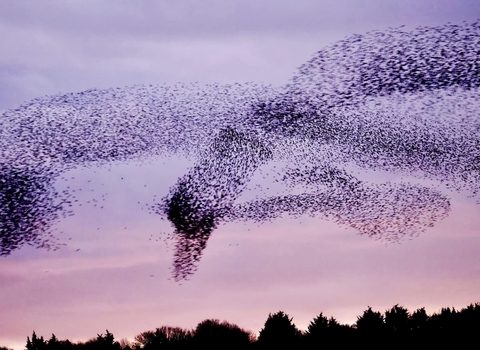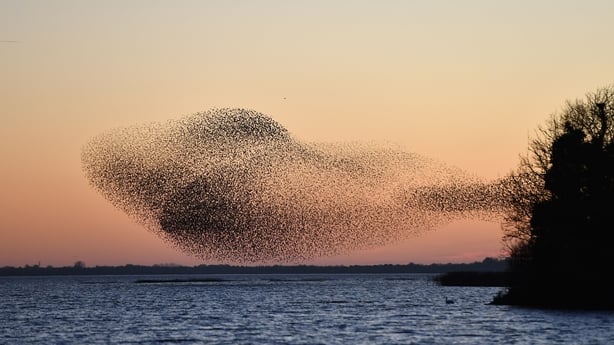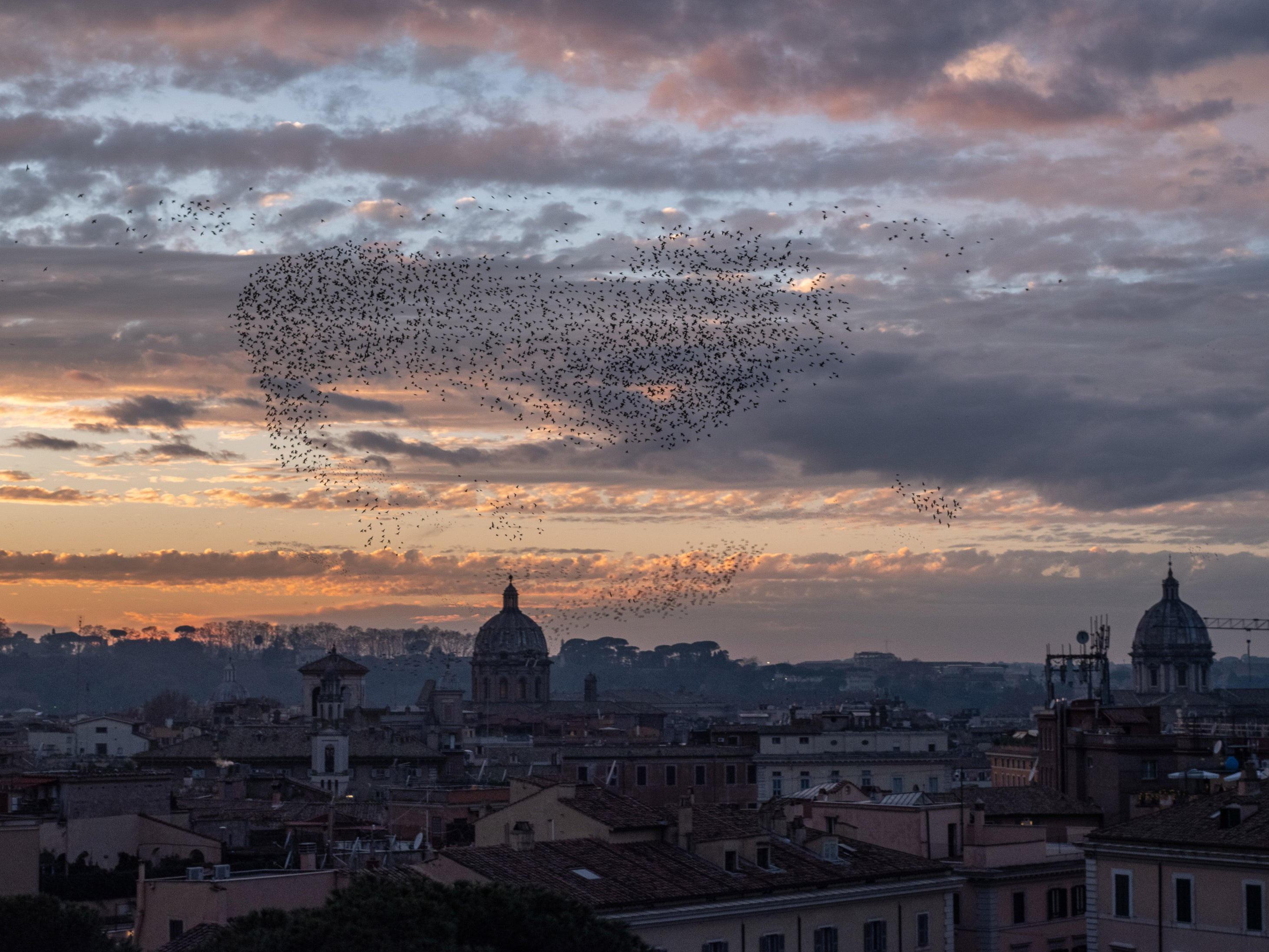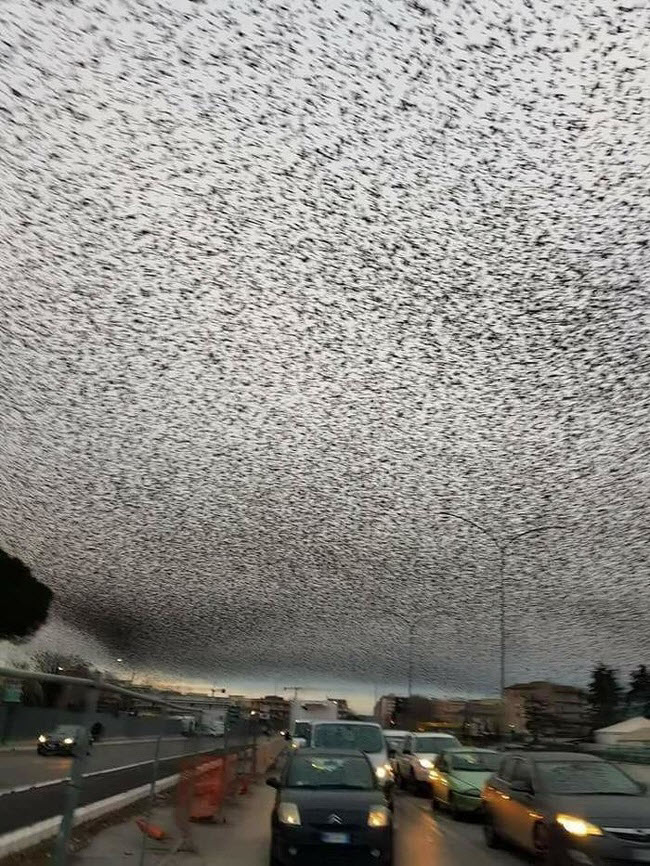Each winter, Rome’s twilight sky transforms into a living canvas as tens of thousands—sometimes over a million—migratory starlings perform mesmerizing synchronized flight patterns. This seasonal spectacle, known as “murmuration,” draws awe and surprises both residents and tourists. But it also brings logistical challenges and concerns for city officials.
What Is a Starling Murmuration?

Starlings are small, highly social birds (about 20 cm long) that flock in vast numbers. The phenomenon of murmuration refers to their breathtaking aerial displays: large flocks sweeping and swooping in unison, darting across the sky in ever-shifting formations. These patterns may resemble dark, swirling clouds, briefly turning the sky black.
Researchers have found that each starling coordinates with about seven nearby birds, creating instantaneous, wave-like movements across the flock. Importantly, the flock remains leaderless yet highly coordinated, reacting collectively to environmental stimuli—especially to evade predators like falcons.
Venice Meets Rome: Why the Eternal City Hosts These Flocks

Between October and February, migrating starlings from Northern Europe—Germany, Hungary, even Russia—flock to Rome, drawn by its milder urban microclimate and reliable roosting trees.
Experts estimate the city receives between 500,000 and one million starlings each winter, with each dusk bringing waves of murmuration.
A Visual Spectacle with a Messy Aftermath

These dramatic flocks become dazzling backdrops against landmarks like the Roman Forum and Piazza Venezia. Tourists often call it “incredible,” capturing wild, swirling formations against glowing sunset skies.
However, the dazzling display has a grim side. Rome’s pathways, cars, and statues are often doused beneath thick layers of starling droppings—slippery, stinky, and messy. Some residents even carry umbrellas while walking under roosting trees to avoid a messy surprise.
Q&A: Why Do Migratory Birds Converge Here?

Q: What drives such synchronized behavior?
A: Murmurations serve as predator defense, making it tough for birds of prey to single out targets. The stunning patterns are quick chain reactions, where each starling responds to its seven neighbors.
Q: Are murmuration events brief?
They last from a few seconds to about 45 minutes after sunset, just before the birds settle into nighttime roosts.
Q: Do they carry diseases?
Ornithologists assert starlings do not spread diseases, but their droppings pose real hygiene and slip hazards.
City Measures: Managing the Marvel

Rome’s city council employs Fauna Urbis, a specialist wildlife group, to manage the birds using non-lethal deterrents:
- Workers in white overalls use bullhorns, flashing lights, and recorded distress calls—the starlings’ own alarm signals—to gently move the flocks to less sensitive areas.
- Operations typically run two to three times weekly near train stations and riversides, especially Termini and Piazza dei Cinquecento.
- Each session lasts about 10 minutes, followed by breaks to avoid bird habituation.
This humane approach respects the birds while lessening the mess in high-traffic areas.
Visit Rome: Don’t Miss This Natural Show

Cultural and nature guides suggest visitors can witness murmurations near Termini, Tiber River embankments, and Piazza Venezia after sundown. It’s advised to arrive 30 minutes before sunset and stay nearby for the evening roost.
But bring caution:
- Wear robust outdoor shoes or carry an umbrella during roost season.
- Avoid standing directly under roosting trees—droppings can be sudden and heavy.
- The birds are used to urban light, so they descend even if the sky appears bright.
Despite potential inconvenience, experiencing a murmuration is often described as magical—a once-in-a-lifetime natural spectacle in the heart of an ancient city.
What It All Means

Rome’s starling murmurations underscore a delicate balance between wildlife and urban life. It shows how wildlife adapts to city environments, and how human ingenuity can co-exist harmoniously:
- Ecological phenomenon: Murmurations demonstrate remarkable natural behaviors and reinforce biodiversity.
- Urban wildlife challenge: Balancing public safety, environmental health, and the preservation of wildlife spectacle.
- Model for cities worldwide: Rome’s non-invasive approach offers a template for humane wildlife management in urban spaces.
Final Thoughts
Rome’s winter sky commands attention—one moment calm, the next engulfed by swirling flocks. It’s both magical and messy, but unquestionably worth witnessing.
This seasonal migration is a testament to nature’s power, reminding us that even in modern cities, wildlife finds its place—and we must learn to share it mindfully.
Sources
- Phys.org – Rome scares off its starlings
- Daily Sabah – Rome’s starlings
- Straits Times – Rome’s bird management
- Washington Post – Starling spectacle
- BirdSpot – Starling Murmurations
- National Geographic – Mesmerizing swarms
